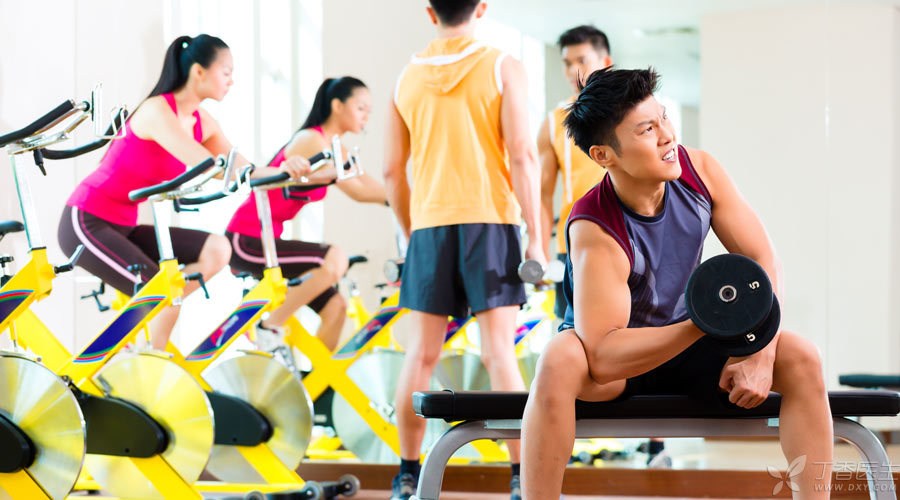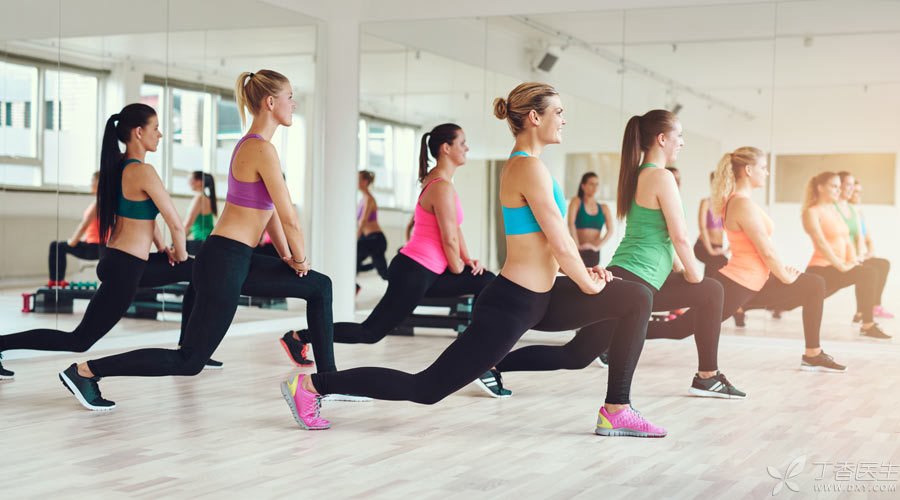
There are more and more people who exercise, but not everyone has achieved results. The main reason is that many people do not really master the eight principles of fitness.
Principle 1: Clear Exercise Purpose
Only when you know the root of the disease can you prescribe the right medicine. If you don’t even know your training purpose, it is basically blind practice.
Let’s say it in several situations:
- If you say: I like playing basketball and want to improve my flexibility and jumping ability through fitness.
OK, you can try basic strength, bounce training, rope ladder, speed change, direction change and so on, as well as some soft items.
- If you say: I want to run a marathon.
It is not easy to run a marathon. You need extremely strong cardiopulmonary endurance. You must arrange basic long-distance running and auxiliary muscle group training.
- If you say: I keep fit to improve my strength.
It can be arranged simply according to [powerlifting] or [weightlifting]. Basic strength training includes squat, hard pull, clean and jerk, snatch, push, horizontal push, and various auxiliary muscle group training.
- If you say: I keep fit to make my body lines better.
Then we need to consider the body fat rate and muscle mass. Is the body fat rate appropriate? Is it low enough to make muscles angular? Is the muscle mass sufficient? What are the deficiencies in appearance? Which parts of muscle can be added to make up for it? … …
The most efficient training is [bodybuilding], dividing muscle groups and dividing the body into several parts for cycle training.
- If you say: I want to lose weight!
Yes, the purpose of most people’s fitness is probably to lose weight, although I prefer to say [reduce fat].
Since the aim is to reduce fat, the training plan should be aimed at those training combinations that do more work, consume more and last longer.
If a person wants to reduce fat, the main training item he chooses is yoga (or Pilates), and almost 90% of the training arrangements are this. Going to the gym every day is to practice yoga in an attempt to reduce his excess weight for many years with this…
It can be said that this kind of plan is completely loser! In the end, you may only become a soft fat man, and on the premise of not dieting too much. If you go on an excessive diet, you will be thin no matter what you practice, but it is not healthy.
Although yoga lasts for a long time, However, low work and low consumption are actually not suitable for fat reduction. Of course, yoga is still very good, you can regard it as a kind of flexible quality training. You can practice yoga completely, but don’t arrange the proportion of yoga training too high. For example, only practice yoga 1-2 times a week, and arrange basic strength + aerobic training at other times.
- If you say: I don’t think so much, I just want to be healthy.
So congratulations, you realize the essence of fitness. However, how to make a training plan according to this goal is even more troublesome.

Principle 2: Pay Attention to Warm-up Stretching
When many people arrive at the gym, what does not warm up, so he eagerly turns on the treadmill to run or carries the barbell for training. At the end of the practice, do not stretch, just take a shower and go home.
This is a [incomplete] training! If you persist in doing this, you may be accompanied by long-term injuries.
Warm-up stretching is a very important part of fitness training! It can even be said that without warm-up and stretching, training cannot be started at all. It must account for at least 20% or more of the total training time.
For example, warm-up and stretching for running
You have to start running, Before formal running, you need to trot or warm up in situ for 5-10 minutes, then simply stretch your quadriceps femoris (front thigh side), hamstring muscle group (back thigh side), calf muscle group and waist back muscle, fully warm up, move your hip joint, knee joint, ankle joint, shoulder joint and waist, then do several groups of squats, and finally start formal running.
After finishing the run, walk fast for a while (3 ~ 5 minutes), and when the body recovers almost from the exercise state (i.e. Breathing evenly and not asthmatic), stretch again, this stretching time is longer than before the run.
The principle of “three preferences” is light and not false.
It is better to use a lighter weight than to deform or incomplete or irregular movements.
Gymnasiums often have such people: they like to enjoy their eyes and compare with each other. What they like to do most is to carry a heavy barbell and do an incomplete or even irregular movement, accompanied by screaming during the exercise… This is not training.
Ensuring the integrity and standardization of movements can not only ensure the training effect, but also avoid sports injuries to the greatest extent.
Remember one thing: the effect of the whole course is always better than that of the half course. Half-stroke action is useful, but it can only be auxiliary.
For example:
It is better to use a barbell with a weight of 150kg for squats than to use 100kg for several squats with lower thighs. If you squat, please [deep] squat.

Principle 4 Comprehensive Training
1. Comprehensiveness of training methods
It means that your training should be diversified, not limited to one training method, try new training more, and not only practice what you like all the year round.
Many boys are fond of strength training. They do strength training all the year round and do not do any aerobic work. This is biased. It will lead to weak cardiopulmonary function and extremely poor endurance. Finally, it will lead to the so-called “bottleneck” that strength cannot go up.
There are also many people who like running and run all the year round. Apart from running, they do not do any strength training. This is also inappropriate. They only do aerobic training all the year round, causing serious muscle loss and easy sports injuries due to weak muscle strength.
Training methods should be diversified, including strength quality, cardiopulmonary endurance, flexibility quality and agility quality. According to personal training preferences, several training proportions will be different.
- If you are an endurance sports enthusiast (like long distance running and marathon), you should give priority to aerobic training and supplement strength training. If you are a strength training enthusiast (like weightlifting and bodybuilding), you should give priority to strength training and supplement aerobic training.
2. The comprehensiveness of the training site
It means that the muscle groups of the whole body should develop evenly and cannot only practice part of them, so as to balance and reduce the probability of sports injuries.
There is such a group of [upper limb activists] in the gym, who only practice the upper body all the year round and do not practice the lower body at all. Finally, the upper body is very strong and the lower limbs [bird legs] are practiced.
I once asked these people why they didn’t practice their legs. Their reason is often that [their lower body is blocked by trousers, which can’t be seen by their sister after practice] [it’s not easy to buy trousers if their legs are thick]…
For example:
If a person only practices the major muscles of chest, back and leg all the year round, and the abdomen practices very little, then it may eventually lead to [pelvic tilt forward]: the lumbar and back muscles are strong, while the abdomen is too weak, the lumbar and back muscles will pull your spine backward tilt, and the body posture will become [quite big belly, pursed buttocks].

Principle 5 Nutrition, Health and Adequacy
Three points of practice and seven points of eating show the importance of diet.
Nutrition intake should also follow the [training purpose] of Principle 1.
- If the aim is to reduce fat: then the calorie intake should be slightly lower, and the carbohydrate and lipid should be appropriately reduced, while the protein and fruits and vegetables should be increased. If the aim is to increase muscle, then the calorie intake should be higher, and the carbohydrate, protein, lipid and fruits and vegetables should be increased.
It should also be emphasized that you must drink more water and don’t wait until you are thirsty.
Principle 6 Adequate Sleep and Regular Work and Rest
In fact, it may be more appropriate to say [three points of practice, three points of eating, three points of sleep and one point of talent].
Sleeping is the greatest supplement in life.
Adequate sleep is the basic guarantee of a person’s energy, about 7-8 hours a day. Of course, there are also individual differences. Some people sleep 4 hours a day is enough.
Muscle and physical strength never grow in the process of training. Training itself is only a process of consumption. Muscle and physical strength grow through [excessive recovery] precisely during the time outside training (diet, rest).
Regular work and rest are also very important.
If your work and rest time is irregular, your sleep time varies too much every day, and your meal time is irregular, then no matter how hard you train, it is equal to zero! Keep your biological clock stable and don’t fluctuate too much.
If it is not a person in a special industry, it is best to make sure to fall asleep before 12 o’clock every day, get up at 7 o’clock in the morning, and make up for about half an hour’s sleep at noon.
Principle 7 Combination of Work and Rest
Don’t force training, listen to the body’s feelings.
I feel so tired today that I don’t want to practice anything. OK, then do nothing and rest.
Rome was not built in a day, nor was Schwarzenegger built in a day.
Fitness is a long-term process, and it is a slow process. You should endure loneliness, don’t give up, stick to it. Fitness is actually more healthy.
Principle 8 Autonomous Learning
Stay foolish, stay hungry.
Fitness has never been a simple thing. Although it is not as precise as space science, it also requires rigorous scientific and targeted guidance. You need to learn basic knowledge of sports physiology, sports anatomy, sports nutrition, sports biochemistry, etc.
Of course, it is not necessary to learn so deeply. When you are free, you should read more fitness-related books, pay more attention to collecting information in this area, learn to think for yourself, and learn to judge the accuracy and credibility of information.
